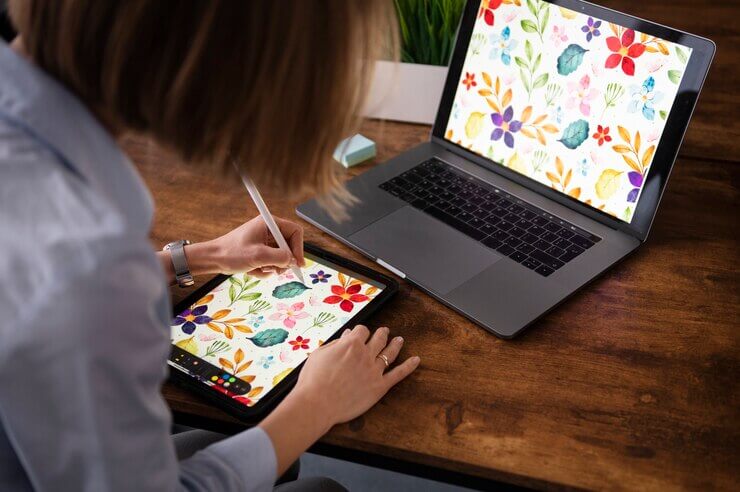
Vinyl cutting software has revolutionized the way we create custom designs and products. Businesses and creative individuals alike can now bring their creative visions to life, from t-shirt designs to home decor. This tool offers essential features that can make creating vinyl projects easier. One primary feature of vinyl cutting software is its auto image tracing, which simplifies converting images into cuttable designs. What designers need now is to find good vinyl cutting software with user-friendly and state-of-the-art features that can help them easily create vinyl projects. A good vinyl cutting software can streamline the workflow and enhance cuts' accuracy. With various options available on the market, ranging from beginner-friendly programs to advanced solutions for seasoned professionals, it is important to know the features and functionalities of these software tools that will most fit a designer’s needs.
Using vinyl cutting software presents a benefit that can significantly enhance the design and production process of vinyl projects. The software can also boost creativity and improve the efficiency of vinyl making.
Good software for business management, including vinyl cutting software, is essential for maximizing the potential. Vinyl cutting machines typically include several key features that enhance usability, efficiency, and creativity.
Just as students are encouraged to explore their passions and strengths when choosing a major, individuals seeking software must consider their specific needs and interests. Identifying what you enjoy or require from software—be it design capabilities, user-friendliness, or advanced features—parallels the process of evaluating what subjects resonate with you academically.
A user-friendly interface is characterized by its intuitive layout, allowing users to navigate easily without confusion. For example, software like Easy Cut Studio is noted for its straightforward interface that enables users to learn how to create and manipulate designs quickly. This intuitiveness reduces the learning curve, making it accessible for both beginners and experienced users alike.
Features such as adjustable text sizes, color contrast settings, and keyboard shortcuts improve usability for a broader audience. This inclusivity is increasingly recognized as a hallmark of quality software design. Consistency in design elements—such as icons, colors, and navigation patterns - can also enhance user familiarity and comfort. In that way, designers can develop proficiency more quickly when similar functions are represented consistently throughout the software.
Effective vinyl cutting software should provide a variety of design tools, including options for drawing shapes, modifying text, and applying effects. One of the standout features of good vinyl cutting software is the ability to convert raster images into vector graphics through powerful image tracing capabilities. This ensures that designs maintain their quality during the cutting process. Robust design tools often include support for various file formats such as AI, EPS, SVG, and more. This versatility enables users to import and export designs seamlessly across different platforms and software.
Before cutting, the software should enable users to visualize their entire project. This capability helps ensure that each component fits together correctly, reducing material waste and saving time during the production process. Effective project visualization includes managing multiple layers within a design.
Users can visualize how each layer interacts with others, which is particularly important for complex projects involving text, images, and graphics. This capability ensures that all components align correctly during the cutting process, reducing errors and enhancing the final output's quality.
The ability to convert raster images into sharp vector graphics is crucial for maintaining good quality in designs. This feature ensures that images remain crisp and clear when scaled or cut. Accurate vectorization generates precise cut paths that guide the vinyl cutter during operation. This precision minimizes errors and ensures that cuts are clean and accurate, which is essential for achieving professional results in any project.

Choosing the right vinyl cutting software is crucial for maximizing your creativity and efficiency in design and production. Here are several key factors to consider when making your selection.
First and foremost, ensure that the software you choose is compatible with your specific vinyl cutting machine. Some software options are designed for particular brands, while others offer broader compatibility. It is important to always check the software specifications before committing.
Evaluate the design capabilities of the software. It is essential to know what the vinyl software can do and determine whether it fits your needs. This can include features that are user-friendly or can adapt to heavily customized vinyl designs. Consider your skill level; beginners may prefer more intuitive interfaces, while experienced users might seek advanced functionalities.
Budget is another critical factor. There are both free and paid options available. Free software like Inkscape provides sufficient features for many users but may lack some advanced tools and customer support found in paid versions. On the other hand, investing in a paid solution like FlexiSIGN or SignLab can offer enhanced capabilities and support, which can be beneficial if you plan to use the software frequently or for professional purposes
As technology continues to advance, vinyl cutting software is poised to evolve and offer even more innovative features. The global Vinyl Cutting Machine Market was valued at USD 97 billion in 2023 and is expected to grow to USD 197.36 billion by 2031. We can anticipate the integration of artificial intelligence to automate tasks like design generation and quality control, enhancing efficiency and accuracy. Augmented reality could provide a more immersive experience for designing and visualizing vinyl cuts, allowing users to see how their creations will look in real-world settings. The integration with 3D printing technology may enable the creation of more complex and dimensional vinyl products.
In response to growing environmental concerns, there may be a focus on developing vinyl cutting software that supports the use of eco-friendly materials and reduces waste. Furthermore, cloud-based solutions could offer greater flexibility and accessibility, allowing users to work from anywhere with an internet connection. These are just a few of the potential future trends in vinyl cutting software. As technology continues to advance, we can expect to see even more exciting innovations in this field.
Vinyl cutting software has fundamentally transformed the landscape of custom design and production, empowering both businesses and creative individuals to bring their visions to life with remarkable ease. The essential features of these tools, such as auto image tracing and project visualization, significantly enhance the design process, making it more efficient and user-friendly. As designers seek software that combines state-of-the-art capabilities with intuitive interfaces, the importance of selecting the right program cannot be overstated.